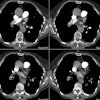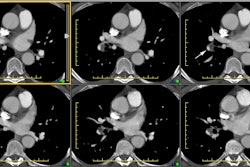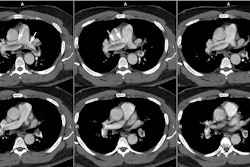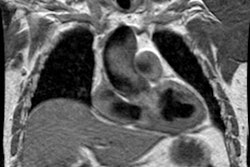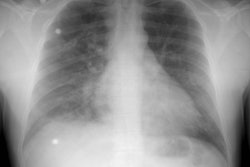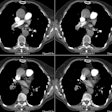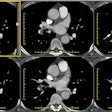Radiology 1999 Nov;213(2):321-39
Helical CT in emergency radiology.
Novelline RA, Rhea JT, Rao PM, Stuk JL.
Today, a wide range of traumatic and nontraumatic emergency conditions are
quickly and accurately diagnosed with helical computed tomography (CT). Many
traditional emergency imaging procedures have been replaced with newer helical
CT techniques that can be performed in less time and with greater accuracy, less
patient discomfort, and decreased cost. The speed of helical technology permits
CT examination of seriously ill patients in the emergency department, as well as
patients who might not have been taken to CT previously because of the length of
the examinations of the past. Also, helical technology permits multiple,
sequential CT scans to be quickly obtained in the same patient, a great advance
for the multiple-trauma patient. Higher quality CT examinations result from
decreased respiratory misregistration, enhanced intravenous contrast material
opacification of vascular structures and parenchymal organs, greater flexibility
in image reconstruction, and improved multiplanar and three-dimensional
reformations. This report summarizes the role and recommended protocols for the
helical CT diagnosis of thoracic aortic trauma; aortic dissection; pulmonary
embolism; acute conditions of the neck soft tissues; abdominal trauma; urinary
tract stones; appendicitis; diverticulitis; abdominal aortic aneurysm; fractures
of the face, spine, and extremities; and acute stroke.
Publication Types:
- Review
